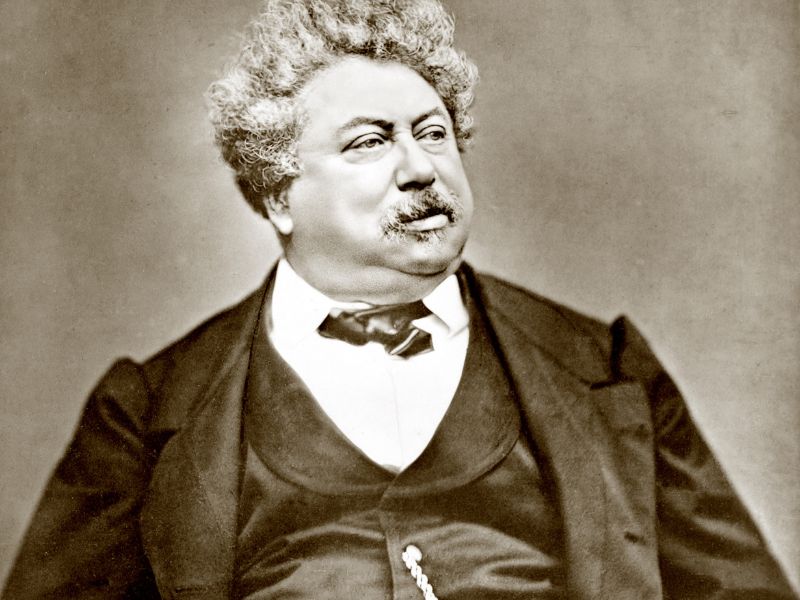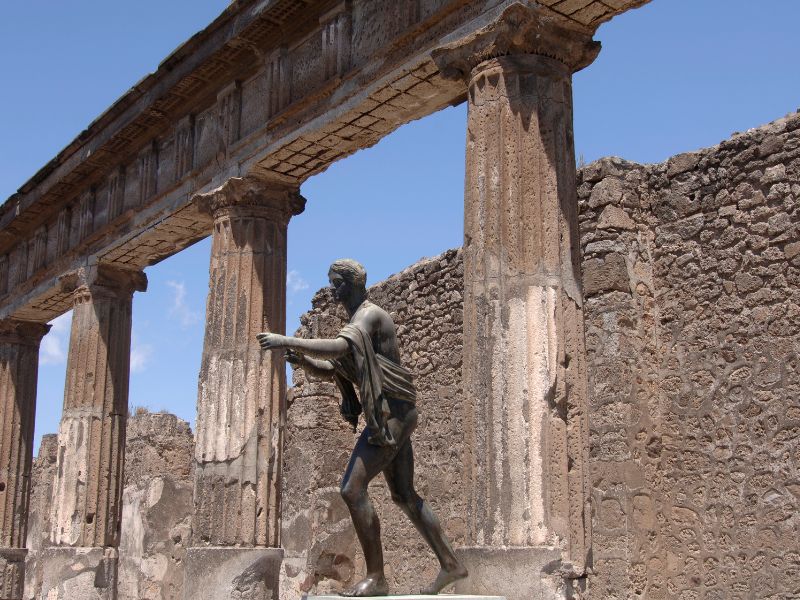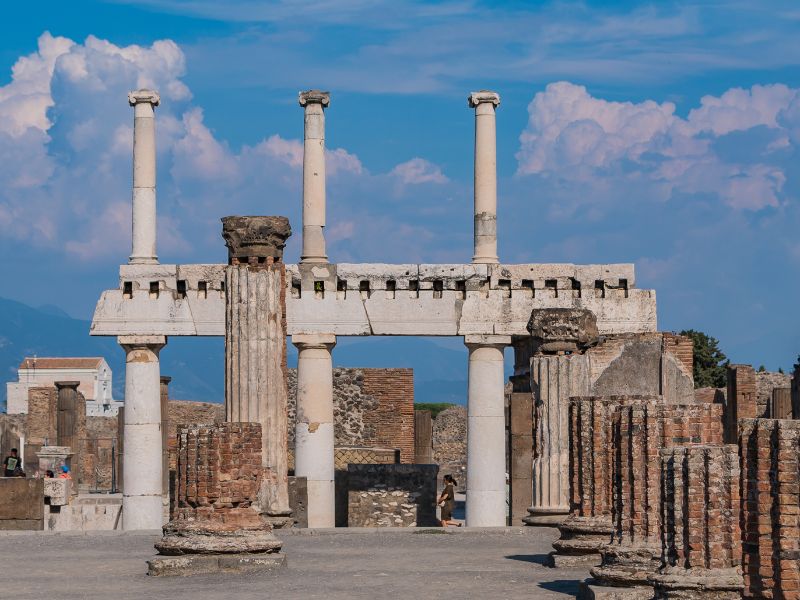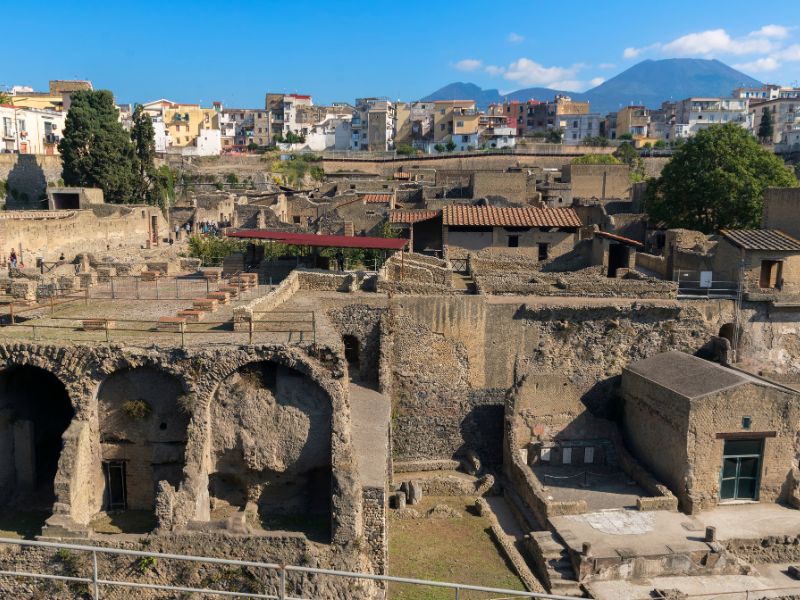Alexandre Dumas’ Unexpected Role in Revitalizing Pompeii
Table of Contents
Introduction
Alexandre Dumas, celebrated for his literary masterpieces such as “The Three Musketeers” and “The Count of Monte Cristo,” surprisingly played a pivotal role in the revitalization of Pompeii. His involvement extends beyond the realm of literature into the preservation of history.
When the ruins of Pompeii were being excavated and studied during the 19th century, the renowned author took a profound interest in the site. His passion for the ancient city and its excavation contributed significantly to the public’s awareness and appreciation of Pompeii.
Through his writings and influence, Dumas helped to galvanize support for further archaeological endeavors and preservation efforts, ensuring that the remnants of this once-thriving city could be studied, cherished, and remembered for generations to come.
Dumas’ Support for Garibaldi

Alexandre Dumas’ engagement with Italian affairs was not limited to his interests in archaeology; he was also a fervent supporter of Giuseppe Garibaldi, a key figure in the unification of Italy. Dumas’ admiration for Garibaldi was evident through his numerous writings lauding the revolutionary’s efforts and leadership.
The author’s relationship with Garibaldi went beyond mere ideological alignment; they shared a deep personal friendship rooted in mutual respect and shared goals for liberty and national unity. Dumas actively contributed to Garibaldi’s campaigns by leveraging his influence and resources to support the revolutionary’s cause.
He provided financial aid, gathered supplies, and used his literary voice to rally international support for the Italian unification movement. Dumas’ dedication to the cause significantly bolstered Garibaldi’s efforts, helping to galvanize the Italian populace and draw global attention to the struggle for independence.
The Letter to Garibaldi

On June 21, Alexandre Dumas penned a heartfelt letter to Giuseppe Garibaldi, offering to procure weapons from France to support Garibaldi’s campaign. This generous offer was received warmly, and it was indicative of Dumas’ deep-seated animosity towards the Bourbon monarchy.
Dumas harbored a personal vendetta against the Bourbons, particularly believing that Ferdinand IV had poisoned his father in 1806 after imprisoning him in 1799.
In his letter, Dumas passionately declared: “Moreover, there is another ground – a personal one, too – why I should feel particularly glad for Garibaldi to take Sicily. It happens that I am at war with the King of Sicily.” His animosity was so pronounced that in 1834, his name appeared on a blacklist, barring him from entering the Kingdom for fear of inciting revolution.
Dumas claimed that King Ferdinand had even threatened him with four years of service in the galleys should he set foot in Naples. Beyond his letter, Dumas provided tangible support by supplying Garibaldi’s forces with one thousand muskets and 550 rifles.
He also penned laudatory accounts of Garibaldi’s victories and served as the general’s ambassador. Dumas, ever pragmatic, asked for two rewards at the campaign’s successful conclusion: the charge of the excavations and Museum, and permission to hunt in the park of Capodimonte.
He had tactfully laid the groundwork for this request by urging Garibaldi in August to announce the resumption of excavations at Pompeii, even going so far as to draft a decree for Garibaldi to issue.
Dumas’ Appointment and Contributions

Garibaldi, recognizing the symbolic and practical importance of cultural heritage, swiftly acted on Dumas’ suggestions. On September 12, 1860, he issued an edict transferring the Bourbons’ collections in the Palazzo degli Studii to the Ministry of Public Instruction.
This was followed by another edict on September 16, allocating funds for the immediate resumption of excavations at Pompeii. By declaring Naples’ antiquities as “national property,” Garibaldi made a profound statement about the shift from monarchical to national ownership of cultural assets.
Alexandre Dumas was appointed as the Honorary Director of the Museum and Excavations, working alongside the existing director, Principe di San Giorgio Domenico Spinelli.
Although Dumas was better known for his literary works, his enthusiasm for Pompeii’s excavations was genuine. He had previously visited Pompeii and Herculaneum in 1835 and had written extensively about these sites in his travelogue “Le Corricolo.”
Controversy and Opposition
Despite his enthusiasm and strategic vision, Dumas’ appointment was met with significant opposition. The Neapolitan public and academic circles were outraged at the idea of a French novelist overseeing their cherished antiquities.
Fausto Niccolini, Secretary of the National Museum, wrote to Garibaldi, expressing that Dumas’ appointment affronted “our rightful national pride.” The controversy culminated in a popular demonstration against Alexandre Dumas, with chants of “Out with the foreigner!” echoing through the streets.
Faced with immense resistance, Dumas eventually resigned from his position. His appointment, though short-lived, highlighted the tension between local pride and the broader revolutionary goals of the time.
Lasting Impact and Legacy
While Alexandre Dumas’ direct influence on Pompeii’s excavations was brief, his involvement had lasting implications. His push for the resumption of excavations and the shift towards public ownership of cultural assets marked a significant turning point.
Dumas’ vision included ambitious plans such as restoring an ancient house to its original state for educational purposes and introducing entrance fees to fund archaeological studies. Although these plans were not immediately realized, they laid the groundwork for future developments in Pompeii’s archaeological management.
Dumas’ involvement also signaled a shift towards a more professional and systematic approach to archaeology. His plans emphasized the educational and cultural value of Pompeii, moving away from the idea of antiquities as mere royal possessions.
This approach foreshadowed the professionalization of archaeology that would be further developed by later figures such as Giuseppe Fiorelli.
Alexandre Dumas’ Literary Tribute to Pompeii and Naples

Alexandre Dumas was deeply inspired by the ancient ruins of Pompeii and Naples, and his fascination with these sites is vividly reflected in his literary works.
In his travelogue “Le Corricolo,” published in 1843, Alexandre Dumas devoted several chapters to his visit to Pompeii and Herculaneum, providing detailed and evocative descriptions of the ruins and the artifacts uncovered during the excavations.
This work not only captures Dumas’ awe and admiration for the ancient cities but also serves as a historical document of the state of the excavations during the early 19th century. Additionally, Alexandre Dumas’ enthusiasm for the archaeological endeavors in Naples influenced his ambitious plans for the restoration and public presentation of Pompeii’s ruins.
His writings and proposals emphasized the educational and cultural significance of preserving these ancient treasures, contributing to the broader appreciation and professionalization of archaeology in Italy. Through his literary and practical contributions, Dumas played a crucial role in bringing the wonders of Pompeii and Naples to a wider audience.
Conclusion
Alexandre Dumas revitalized Pompeii’s excavations, merging literature, politics, and cultural heritage. Supporting Garibaldi, he shifted Pompeii towards public ownership and professional management. As Honorary Director, Dumas significantly influenced archaeological practice and emphasized cultural preservation.
